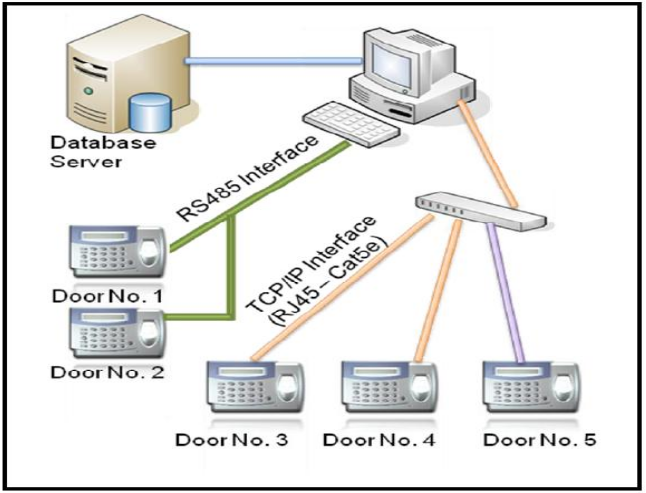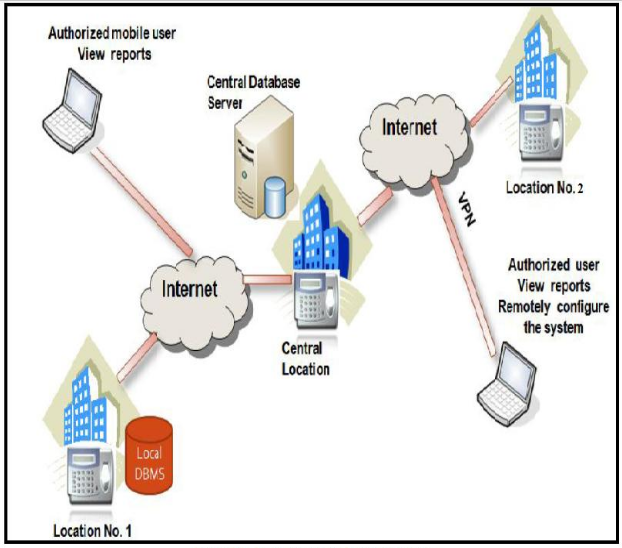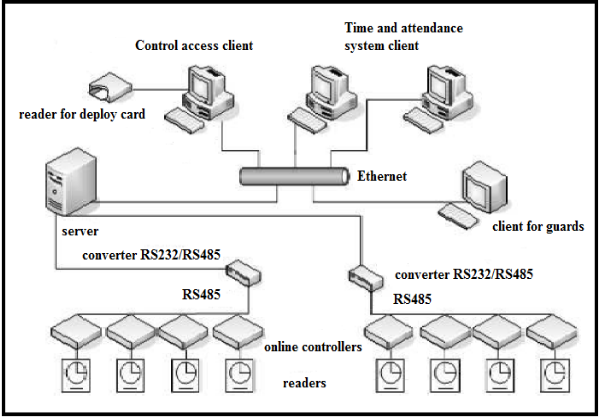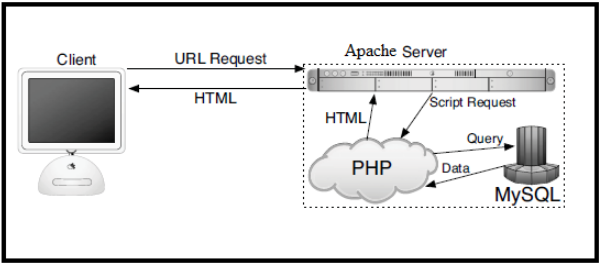ABSTRACT
A finger-print based attendance system has been established to track students attendance reliably in various sessions through the year. It mainly consists of fingerprint reader connected via Ethernet LAN to PC containing interface through which attendance data received from reader are displayed as well as required system information is handled. Database was constructed to store all system information about students, departments, courses and lecture times. It has been constructed using SQL database management system while interface built using WAMP package and PHP scripts.
Another Visual Basic interface has been built to connect reader and PHP interface. Random students have been assigned unique ids for each and their fingerprints catched and stored in the reader. They were also assigned to specific courses attendance system page through the interface. Random information about lecture times, courses and departments codes have been inserted into the database for testing. Attendance of previous students has been taken at different times for testing. At each time attendance of students has been obtained correctly through the required course attendance page in the interface.
LITERATURE REVIEW AND DATA COLLECTION

Figure 2.1: System Architecture for a Single location

Figure 2.2: Architecture of a Distributed system
Each fingerprint access controller with integrated RFID reader has an internal memory where an event log is stored. This log contains every system event such as: successful user identification, failed user authentication, modifications of system’s configuration, user enrollment, user account removal. The event log could be downloaded via RS232/485 or Ethernet (RJ45) interface. The RS485 serial interface could connect up to 127 devices to create a local network. The Ethernet interface uses TCP/IP protocol, so there could be created a distributed time & attendance system with devices connected via Internet. The system architecture is presented in figures (Figure 2.1 and Figure 2.2).

Figure 2.4: Development Program of Labour Attendence System
Figure 2.4 shows the system deployment diagram. The readers are connected to the controllers which communicate with the server through the RS 485 bus, and this connection is encoded by means the AES – 128 protocol. Due to the computers are not equipped with the RS 485 input, various converters can be used e.g. RS 232/RS 485, USB/RS 485, and Ethernet/RS 485. All the controllers are managed by the server to which they are connected.
METHODS AND REQUIREMENTS

Figure 3.1: Interaction among WAMP Components in response to page request
PHP was designed to write Web scripts, not standalone applications. PHP scripts run only after an event occurs — for example, when a user submits a form or goes to a URL. PHP is server – side, that is, everything PHP does occurs on the server. A Web server application, like Apache, is required and all PHP scripts must be accessed through a URL ( http:// – something, for local host – http://localhost/ – php file name ). MySQL is the most common used DBMS as shown in previous chapter. Interaction among the components of WAMP for a specific page request is shown in figure 3.1.
The course is indicated using foreign key called “course_number”, by which course can be determined from another table called “courses”. Attendance data is transferred from the general table to courses tables when it is compatible with information contained in table of Lecture times for each record of course (matching performed using special queries. The database view development at this stage is expressed by figure 3.3.
IMPLEMENTATION AND RESULTS
That stage contained the following steps:
- First step in implementation was powering the fingerprint reader. The reader was powered through an adapter that converts AC power 220v/50 Hz into DC power of 12 volts.
- After powering the reader fingerprint templates of different users could be taken. Before storing a specific fingerprint template in the reader, a distinguishing id relating to the user had to be accessed. For successful storing of the template, the finger print should be placed correctly on the scanner for three successive times. According to reader the user could be assigned as administrator or normal user. The advantage of this classification that when the reader was powered, no action could be done with it unless one of the users that were assigned as administrators put his fingerprint and the reader identified it. This property can give full control over the reader operation especially in the attendance system where lecturers can be assigned as administrator and students as normal users. In addition it provides reliability that the reader storage capacity and transaction log capability are to be exploited efficiently and the attendance of students is taken within the lecture time and in presence of the lecturer.
PROJECT REVIEW
Results and Objectives Compatibility
Objectives that have been intended to be achieved throughout implementation of this project were summarized in providing a constrained and reliable students’ attendance tracking system and a friendly graphic user interface allowing handling and retrieval of system’s information in clear and convenient way. Throughout results obtained in previous chapter, it can be said that attendance tracking method that represents the base for code design of the system, allows for efficient and reliable attendance tracking, since it puts in consideration various possibilities that could be encountered throughout implementation of the system.
Problems Encountered
Successful connecting of the fingerprint reader to a network was always not performed immediately during implementation. It was needed to track IP addresses starting from specific one that falls in the network dedicated range of addresses until getting one through which communication with network, and hence with the installed attendance system, could take place. Once disconnected for some reason, a communication difficulty might be encountered for successful reconnection.
Possible Future Development
Lecturetimes” table in the database through which specific course session can be determined for attendance at any time, was constructed so that date information (year, month, day) is used for this determination. This means that each session date throughout the semester should be pre-inserted into “Lecturetimes table”, which leads to sizable table as well as inconvenient required work. This can be developed so that determination is done through day of week sent along with attendance data from Visual Basic interface, leading to table of acceptable size.
Source: University of Khartoum
Author: Mohammad Kamalal-Din Abbas
>> Final Year Engineering Student Database Management System DBMS Projects using PHP
